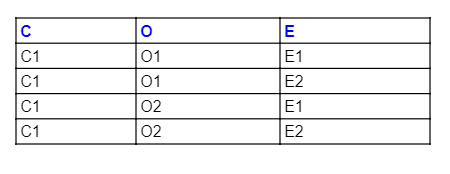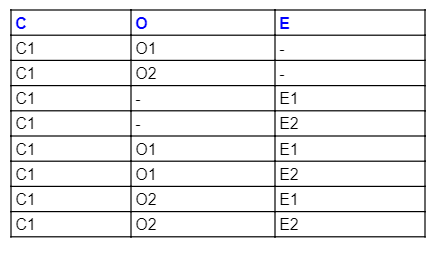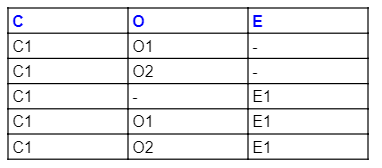Topic
The following and quite simple AQL will be evaluated with different datasets (A,B,C,D) using either AND or OR . For each case we have defined alternative and possible resultsets. Look at the examples. Which of the answers do you expect? Are there something missing?
Base AQL to be used for all the examples.
select o, e from composition c contains (observation o AND/OR evaluation e)
Dataset A
composition
o1, o2
e1, e2
Alt A - AND
AND
o1, e1
o1, e2
o2, e1
o2, e2
Alt A - OR1
OR (alt1)
o1, e1
o1, e2
o2, e1
o2, e2
Alt A - OR2
OR (alt2)
o1
e1
o2
e2
Dataset B
composition
o1, o2
e1
Alt B - AND
AND
o1, e1
o2, e1
Alt B - OR 1
OR (alt1)
o1,
, e1
o2,
Alt B - OR 2
OR (alt2)
o1, e1
o2, e1
Dataset C
composition
o1, o2
Alt C - AND
AND
Alt C - OR1
OR (alt1)
o1,
o2,
Alt C - OR2
OR (alt2)
o1
o2
Dataset D
composition
o1
e1
Alt D - AND
AND
o1, e1
Alt D - OR 1
OR (alt1)
o1, e1
Alt D - OR2
OR (alt2)
o1,
e1,









